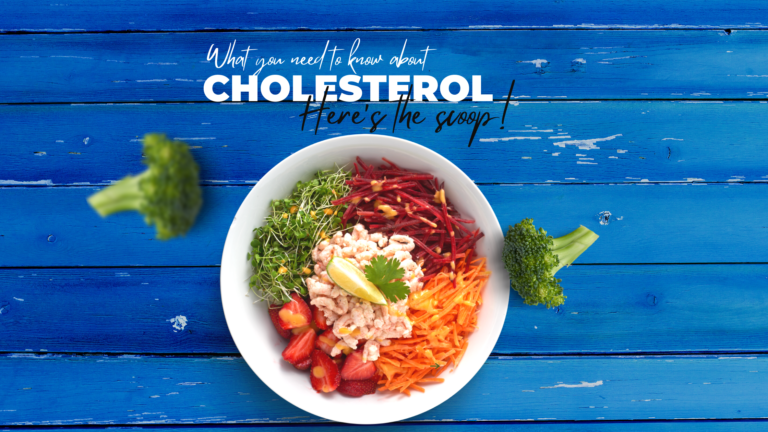What You Need to Know About Cholesterol
What cholesterol numbers mean and easy food swaps to improve your cholesterol

THE FACTS
Cholesterol is a necessary form of fat in the body. Small amounts are made naturally in the liver and produce sex hormones and cortisol, a measure of stress. However, dietary patterns consistent with consuming fatty meat, excess sugar intake, and low fiber, can cause cholesterol to build up in our blood. A buildup of cholesterol leads to chronic health issues such as heart disease. If you are told that you are at risk for heart disease, your doctor will likely order blood work. There are several parameters doctors check to determine your risk of heart disease. These can often be confusing and make no sense. So, what do all those cholesterol tests show, and what do they mean? Here is the lowdown on the most common cholesterol tests and what they mean for your health:
Triglycerides are a way to measure total cholesterol levels
- A number below 150 is normal
- 200 is borderline high
- Greater than 200 is indicative of health concerns
HDL: is considered the good cholesterol because it removes cholesterol from our bloodstream to our liver to be metabolized and removed from the body.
- An HDL above 60 is recommended
LDL: is considered bad cholesterol (though it is necessary in small quantities for proper cell functioning)
- 100-129 is deemed to be good
- 130-159 is borderline high
- 160-189 is high
If you are outside of the normal range, have no fear. The blood tests above for cholesterol improve with changes in diet. A decrease in saturated fat, increase in fiber, and increase in heart-healthy omega 3’s will help reduce cholesterol levels in the body and improve long-term health outcomes. Swapping out some of the foods below will put you on the right track to better heart health. It is important to note that long-term changes occur over time, and the most success comes with small incremental changes. Find the food item on the list that will be easiest for you to swap out. Once that change becomes a habit, move on to the next food swap and so on.
THE HOW
Easy food swaps to lower cholesterol: Starred items tend to be the most common and straightforward food switches.
- Nuts (walnuts) instead of croutons*
- Popcorn instead of chips*
- Canola oil/Olive oil over vegetable oil*
- Greek yogurt instead of sour cream
- Ground turkey instead of ground beef*
- Quinoa flakes instead of corn flakes
- Hummus instead of fatty, creamy dips*
- Dark chocolate instead of milk chocolate*
- Canadian bacon instead of regular, fatty bacon
- English muffins instead of bagels, croissants, or muffins*
- Vinegar and lemon juice instead of creamy salad dressings
- Brown rice instead of white rice
- Oatmeal instead of cream of wheat
- Raisin bran instead of corn flakes
- Fruit in plain yogurt rather than buying flavored yogurt*
- Roasted potatoes instead of French fries*
- Seltzer water instead of soda pop*
- Bake or broil cooking methods rather than frying*
- Lean red meats such as sirloin rather than skirt steak/t-bone or new your strip*
- 90/10 burger over 80/20 burger*
- Increase fish consumption to at least once per week and include either salmon, mackerel, or herring to benefit the heart.
